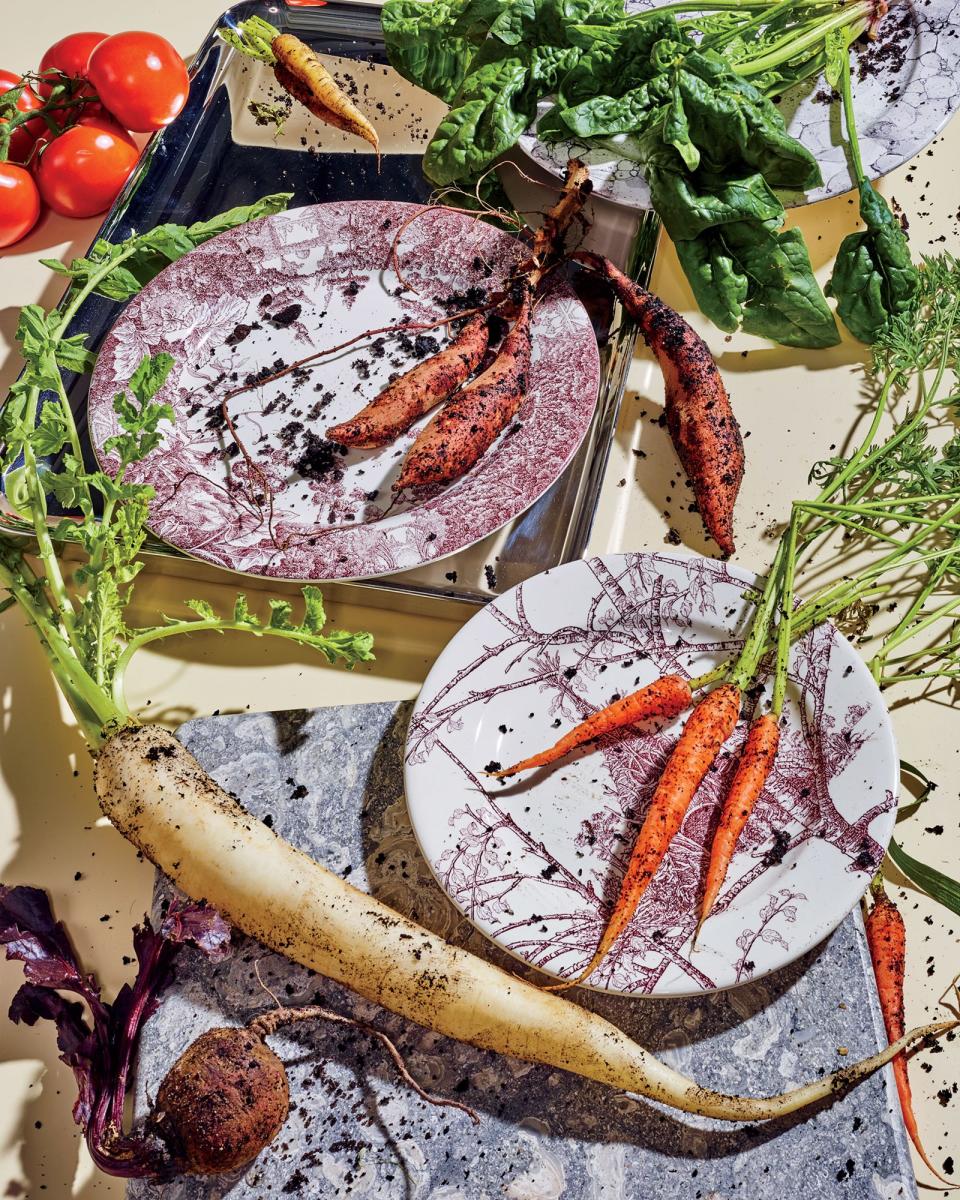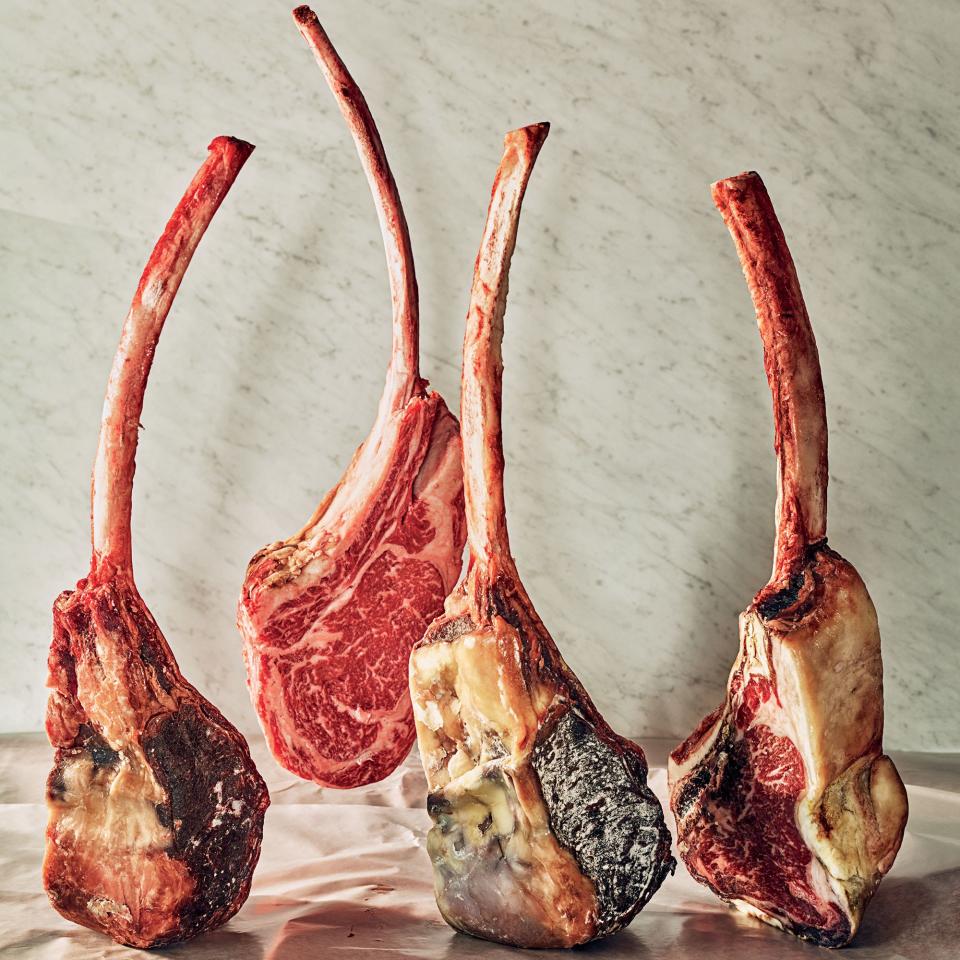This Natalie Portman–Backed Documentary Will Make You Seriously Consider Going Vegetarian
“Good food, good eating, is all about blood and organs, cruelty and decay.” That visceral opening line of “Don’t Eat Before Reading This,” the 1999 New Yorker article that transformed a chef into an overnight sensation, was a portal into one man’s stomach—a Machiavellian place ruled by sinew and grease fire. But Anthony Bourdain wasn’t just speaking for himself. In America, his definition of cuisine—dressed up with a squiggle of ketchup or an undertow of gravy—looks a lot like, well, dinner. Is that hamburger a sacred rite or an unholy sacrifice? You be the judge.
Eating Animals, a pointed new documentary based on Jonathan Safran Foer’s 2009 book of the same name, delivers a firm verdict. (In a word: Don’t.) And as a growing body of research lays out, there are plenty of reasons to abstain. Health is one. A recent study linked a diet rich in animal proteins with a 60 percent increase in the risk of cardiovascular disease, while a 2015 report by the World Health Organization labeled red meat as “probably carcinogenic.” Then there’s the planet. According to the film, somewhere between 14 percent and half of all climate change is tied up in animal production, from razed forests to methane emissions from gassy cows. Pepto-pink pools of waste by-products ooze toxic sludge into groundwater and river systems; routine antibiotic use in livestock breeds superbugs that bring us one step closer to a pandemic. “What we know about eating animals is that we don’t want to know,” Elizabeth Kolbert wrote in a review of Foer’s book.
The crux of that willful blindness—and the heart of the film, directed by Christopher Dillon Quinn with narration by Natalie Portman—is the element of cruelty; with factory farming responsible for all but 1 percent of American meat, ours is an inhumane society to which we all, by association and by appetite, belong. Eating Animals is not the first time we’re seeing hidden-camera footage inside slaughterhouses, where forklifts push ailing cows and workers toss piglets like water balloons; it’s not the first time we’re seeing farmers wade through a wall-to-wall carpet of mangy chicken, holed up in the dark. And it’s just the latest in a long string of rightfully preachy docs. Here, though—with a cast of characters that includes a former Perdue chicken producer, a whistleblower veterinarian, an environmentalist fisherman, and a heritage poultry specialist—the group manages to ground abstract problems in the everyday. Is it enough to spark a change? Foer himself describes leaving behind “a diet of conscientious inconsistency” for committed vegetarianism. Bourdain had other thoughts; in that 1999 article, he memorably called vegetarians—“and their Hezbollah-like splinter faction, the vegans . . . enemies of everything that’s good and decent in the human spirit.” (Hyperbole, yes, but in his understanding of food as a tool of empathy and a bridge between cultures, there’s a time and place for eating just about everything.) As for charting your own course, consider ruminating on these four points inspired by the film.

It’s Never Too Late to Go Vegetarian—Again
“Mark Twain said that quitting smoking is among the easiest things you can do; he did it all the time. I would add vegetarianism to the list of easy things,” Foer writes in Eating Animals. Indeed, how many twirls of ragù or slivers of perfectly crisp bacon have you sampled since the last exposé about factory farming made you swear off meat? This time of year, with the greenmarkets in full swing (and pictures of tiny, adorable pigs on Instagram), there’s no better time to re-embrace the full splendor of the plant kingdom. For those umami cravings, chase down a “bleeding” Impossible Burger or throw a Beyond Meat patty on the grill (Tyson Foods has taken a 5 percent stake in the alt-protein company).
Think of That Hen as You Would a Furry Canine Friend
The rise of emotional-support pets has underscored what we’ve always known: that animals have a deep connection with humans. But for every Porter and Spot out there, 60 percent of mammals on earth are livestock; Foer writes, “Every factory-farmed animal is, as a practice, treated in ways that would be illegal if it were a dog or a cat.” Put more succinctly: Those concentrated animal feeding operations (CAFOs) “treat living animals like dead ones”—a sobering thought about the link between quality of life and quality of food. Break the cycle! Befriend a laying hen or sow (via a backyard flock or a social media–savvy farm) and put down the fork—for now, at least.
There’s Power in Putting Your Money—Or Your Time—Where Your Mouth Is
Swearing off meat is a principled choice, but don’t expect the industry to notice. There are too many fast-food chains with mouths to feed. But collective activism makes an impact. The Animal Legal Defense Fund, an organization that argues against cruelty in agriculture (or “ag”), has been fighting so-called Ag-Gag laws, which criminalize the act of recording abuses at factory farms and slaughterhouses. “Ag-Gag is the stupidest thing ag ever did,” says Temple Grandin, Ph.D., a professor of animal science and a bright spot in the documentary, dressed in an embroidered cornflower-blue Western blouse with a blowsy red necktie. “When you get bashed”—that is, when the public finds out about bad practices or abuses—“you should be opening the door, not shutting it.” Help lobby for improvements and help fund the good guys. And remember, as one whistleblower says: “You vote at least three times a day with your fork.”
If You Are Going to Eat Meat, Seek Out Ethical Independent Farmers
Old-school farmers raising actual free-range chickens and actual grass-fed beef depend on meat eaters to stay afloat. “I just don’t know how else to finance what I’m doing. This is the way I know of saving these endangered animals,” says Frank Reese, of Good Shepherd Poultry Ranch in Lindsborg, Kansas. “If you want to help preserve them or save them, we have to put them back into your meal.” Save up for one of Reese’s heritage turkeys for Thanksgiving or attend a chef-led dinner featuring his fancy birds. As Julia Child once said of mass-produced chicken, “If you are interested in price alone, you will often end up with something that tastes like the stuffing inside a teddy bear.”



